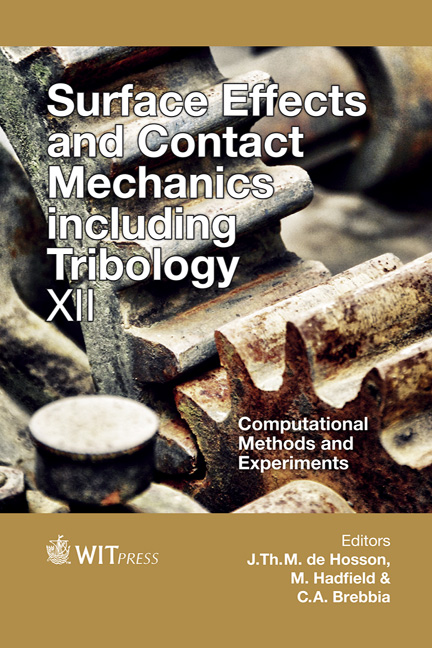Plasma Electrolytic Oxidation (PEO) Coatings On Mg-alloys For Improved Wear And Corrosion Resistance
Price
Free (open access)
Transaction
Volume
91
Pages
14
Page Range
163 - 176
Published
2015
Size
847 kb
Paper DOI
10.2495/SECM150151
Copyright
WIT Press
Author(s)
R. O. Hussein, X. Nie, D. O. Northwood
Abstract
Due to their high chemical reactivity, relatively low melting point and low hardness, magnesium and magnesium alloys have relatively poor corrosion and wear resistance. Since both corrosion and wear are surface phenomena, a number of surface engineering techniques have been used to improve corrosion and wear performance. Whilst some surface hardening/strengthening methods have led to improvements in wear properties, they have not, in themselves, significantly improved the corrosion performance. Plasma electrolytic oxidation (PEO) has the potential to produce hard, compact oxide coatings that are well adhered to the magnesium alloy substrate. Such coatings can provide both improved wear and corrosion resistance. In this paper we describe how by changing the PEO processing parameters (substrate alloy; electrolyte; current or voltage; processing time) we can change the nature of the PEO oxide coatings (thickness; microstructure; porosity; phase content; composition) which, in turn, effects the corrosion and wear performance. All PEO-coatings have a three-layer structure with a porous outer layer, and intermediate dense layer and a thin inner dense layer. From a corrosion aspect, the performance of coatings is determined by the time taken for corrosion to initiate since this is much shorter than time taken for the coating to degrade. For PEO-coated Mg-alloys, this initiation time is primarily determined by the thickness, porosity and phase content of the inner dense layer at the coating/substrate interface. With respect to tribological properties, the coefficient of friction (COF) in dry sliding wear increases with increasing surface roughness of the PEO coatings. The wear rate is primarily determined by the thickness and hardness of the intermediate dense layer. Coatings containing less porosity and higher spinel-phase (MgAl2O4, Mg2SiO4) content are harder and more wear-resistant.
Keywords
magnesium alloys, PEO coatings, three-layer structure, corrosion, tribological properties





